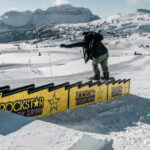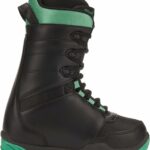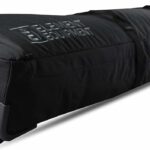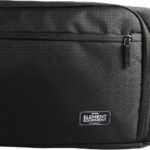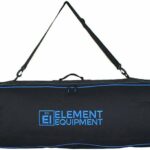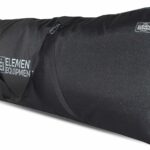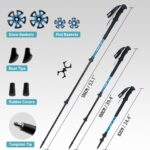You’re hurling down a snow-covered mountain, feeling the rush of cold air and adrenaline, your snowboard flowing smoothly beneath you. Then, you spot it: a rail, a box, or maybe even a tree trunk. You’re about to jib – a term ingrained deep within the snowboarding lingo. In the simplistic terms, jibbing entails any act of riding on non-snow surfaces, a key element of freestyle snowboarding. It’s about pushing the boundaries and using the terrain to its fullest. As we navigate through the ins-and-outs of jibbing in snowboarding, let’s set you up so you’re ready to leap with confidence into this thrilling aspect of the snowboarding world.
Understanding the Concept of Jibbing
If you’re into snowboarding, you may have heard the term “jibbing” thrown around. It can be intimidating if you’re not familiar with the terminology, but don’t worry, it’s not as complex as it might seem at first.
Origins of Jibbing
Jibbing got its start in the world of skateboarding, where riders would slide and grind down handrails and banisters. The idea was to use the urban environment in creative and unexpected ways. This concept was soon adopted by the snowboarding community, transforming the way riders interacted with the mountainous terrain.
Definition of Jibbing in Snowboarding
In snowboarding, jibbing refers to the act of riding across or sliding down any non-snow surface. This could be metal rails, boxes, tree logs, or anything else you find on the slope. It’s all about using your imagination and challenging yourself to get creative with your movements.
The Jibbing Technique in Snowboarding
The world of jibbing is vast and dynamic, bringing an entirely new array of tricks and maneuvers to the world of snowboarding.
How Jibbing Evolved in Snowboarding
Jibbing injected a fresh dose of adrenaline and creativity into snowboarding. It moved the sport away from solely downhill racing and added an urban, freestyle dimension to it, enticing riders to pull off complex maneuvers on non-traditional surfaces.
The Basics of Jibbing Technique
The key to jibbing is balance and control. It’s about shifting your weight, bending your knees, and keeping your body centered over your board. It’s best to start with simple tricks, like ollies and 180s, before moving onto more complex jibbing maneuvers.
Types of Jibs in Snowboarding
Jibbing is a versatile technique that can be used on a variety of obstacles, each presenting its unique set of challenges and tricks.
Rails and Boxes Jibbing
Rails and boxes are common features in snowparks. They lend themselves well to jibbing, allowing riders to slide along their surface. Rails require precision control, as you must balance on a narrow surface.
Natural Jibbing
Natural jibbing involves making use of the terrain around you. This could be using tree stumps as jumps or sliding down an icy incline. The possibilities are endless and only limited by your creativity.
Jibbing Gear and Equipment
Having the right equipment not only makes jibbing easier but also safer.
Choosing the Right Snowboard for Jibbing
A good jibbing board is typically shorter, wider, and more flexible than a standard snowboard. These boards have a twin-tip design, which allows for easier movement in both directions.
Importance of Protective Gear
Jibbing can be tough on your body. It’s crucial to wear a helmet, knee pads, and wrist guards to avoid serious injuries. A back brace can also be beneficial, as it protects your spine during falls.
How to Begin Jibbing
Just like any new skill, starting off with jibbing can feel overwhelming. However, with the right approach, it can be a lot of fun.
Starting off on small obstructions
Starting small is crucial when learning to jib. Get comfortable with your snowboard and find small obstacles, like mounds of snow or small boxes, to practice your sliding and balancing.
Mastering Jibbing Basics
Once you’re confident on small obstacles, it’s time to move on to bigger ones. Remember, the key to successful jibbing is control and balance. Make sure to keep practicing regularly.
Advanced Jibbing Techniques
Once you’ve mastered the basics, it’s time to take your jibbing to the next level.
Popular Advanced Jibbing Moves
Some popular advanced jibbing moves include nose and tail slides, 270s, and board slides. These moves require more control and precision, but with practice, you’ll get there.
How to Progress in Jibbing
The best way to progress in jibbing is to consistently challenge yourself. Try larger obstacles, combine tricks, and always aim to be a better rider than you were the day before.
Safety Precautions while Jibbing
While jibbing is thrilling, it’s also important to prioritize your safety to ensure you can enjoy the sport for years to come.
Avoiding Injuries in Jibbing
Always start with a proper warm-up and never try to push yourself too hard, too fast. Becoming proficient at jibbing takes time, so don’t rush. Instead, progress at your own pace and always wear your protective gear.
Proper Fall Techniques
Learning to fall correctly can help you avoid serious injuries. When you fall, try to let your body go limp rather than tensing up. This helps to distribute the impact, reducing the risk of injury.
Common Mistakes in Jibbing
Everyone makes mistakes when learning something new. Knowing what these common errors are can help you avoid them.
Incorrect Body Positioning
Balance is crucial in jibbing, and incorrect body positioning can throw you off. Keep your body centered over your board and flex your knees for better control.
Landing Mistakes
Landing can be tricky, especially from a high jump. Make sure to land with your knees slightly bent to absorb the shock and keep your balance.
Learning Jibbing from Expert Snowboarders
There’s a lot to learn from those who’ve already mastered the art of jibbing.
Learning from Professional Jibbers
Watching professional jibbers in action can provide invaluable lessons. Pay attention to their body movement, how they approach each obstacle, and how they maintain balance during complex maneuvers.
Online Jibbing Tutorials
You’ll find a gold mine of jibbing tutorials online. They can guide you step-by-step, providing tips and tricks to get you jibbing like a pro.
The Influence of Jibbing on Snowboarding Culture
Jibbing has not only changed how people snowboard but also greatly influenced snowboarding culture.
Influence on Snowboarding Styles and Techniques
By pushing the boundaries of what’s possible on a snowboard, jibbing has inspired countless new styles and techniques. It’s given rise to a more creative, freestyle approach to snowboarding.
Jibbing Competitions and Events
Jibbing competitions have become increasingly popular, attracting top talents from around the world. From small local events to large international competitions, jibbing has found its place in the spotlight, showcasing the creativity and skill of modern snowboarders.
So, now that you’re familiar with the basics of jibbing, why not give it a try? Remember, start small, practice regularly, and always prioritize safety. Happy snowboarding!
- What Snowboard Bindings Should I Get? - January 23, 2024
- What Size Screws For Snowboard Bindings? - January 23, 2024
- How To Snowmobile On Water? - January 23, 2024


